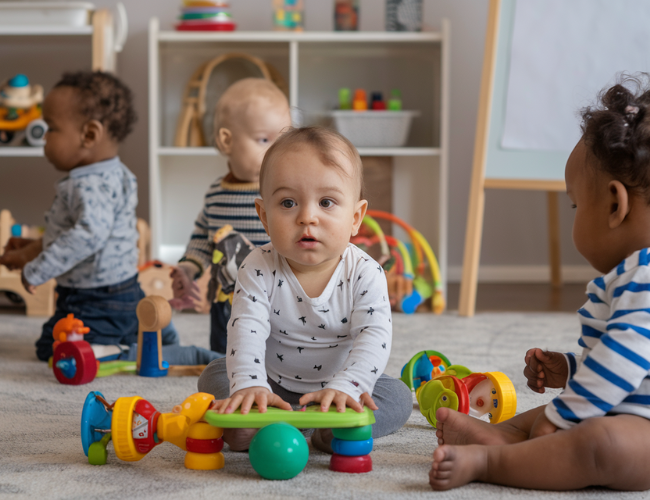The Power of Yet: Embedding Growth Mindset Across Your Centre
Greg Dixon, Director of Business Development
Thursday, Apr 3, 2025 – 5 min read
Childcare leaders are known to be problem-solvers and somehow manage to meet the multitude of requests made of us from our staff, students, and families every day. However, there is little time nowadays to pour into our educators, assistants, and support staff during the year.
So, here are simple, meaningful, and powerful ideas that you can take into your next staff meeting: a way to equip your team to embed Growth Mindset into their classrooms – starting now.
Why Growth Mindset Matters
Carol Dweck’s concept of a Growth Mindset is about helping children understand that abilities aren’t fixed – they are developed through effort, strategy, and support. It is not “I can’t do this,” but “I can’t do this yet.”
For educators, this subtle shift in language and perspective can help children:
- Develop resilience in the face of challenges
- See mistakes as part of the learning process
- Build a love of learning that lasts well beyond the classroom
How to Teach Growth Mindset at Every Age
You do not need to overhaul your entire curriculum to start. Instead, infuse it into what you’re already doing – through everyday language, activities, and intentional moments. Here are simple strategies to use in each age group:
Infants & Toddlers (0–2 Years)
Yes, infants can benefit from a Growth Mindset approach, as well.
- Narrate Effort Over Outcome: “You are working so hard to reach that book!”
- Model Patience: When a tower falls, say, “Oops! Let’s try again,” to build perseverance.
- Celebrate Trying: Encourage small milestones by emphasizing the process – “Look how you are figuring it out!”
Preschoolers (2–5 Years)
- Create a “Yet” Wall: Let children draw or place sticky notes with things they are still learning (e.g., tying shoes, writing names). Then revisit it to celebrate progress.
- Storytime Twist: Read books that model growth mindset (like “The Most Magnificent Thing” by Ashley Spires), and ask, “What did the character learn by trying again?”
- Reframe Mistakes: When a child spills or struggles, say, “That’s okay! What can we try differently next time?”
School-Age (6–12 Years)
- Mindset Check-Ins: Begin group discussions with a “fixed or growth mindset moment” from the day.
- Reflection Journals: Encourage daily or weekly journaling with prompts like, “What was something hard I tried today?” or “What’s something I can’t do…yet?”
- Teach Brain Science: Share simple, age-appropriate information about how trying hard helps our brains make new connections.
- Teach them that ‘When you try hard things, your brain builds new connections.’ Just like your muscles grow when you lift something heavy, your brain gets stronger when you learn something tricky.
Empowering Your Educators to Model It
Here is a quick activity for your next team meeting to help make teaching Growth Mindset simple:
The “Power of Yet” Circle Activity (10 – 15 minutes)
- Ask: “What’s something you used to think you couldn’t do, but now you can?”
- Then ask: “What’s something you still feel stuck on?”
- Invite staff to write that second thing down and add “…yet” to it.
Bonus: Let them pair up and brainstorm one strategy to help shift that mindset.
By equipping your team with tools like this – grounded in empathy, purpose, and practicality, you are helping them show up not just as educators, but as growth guides for the next generation.








